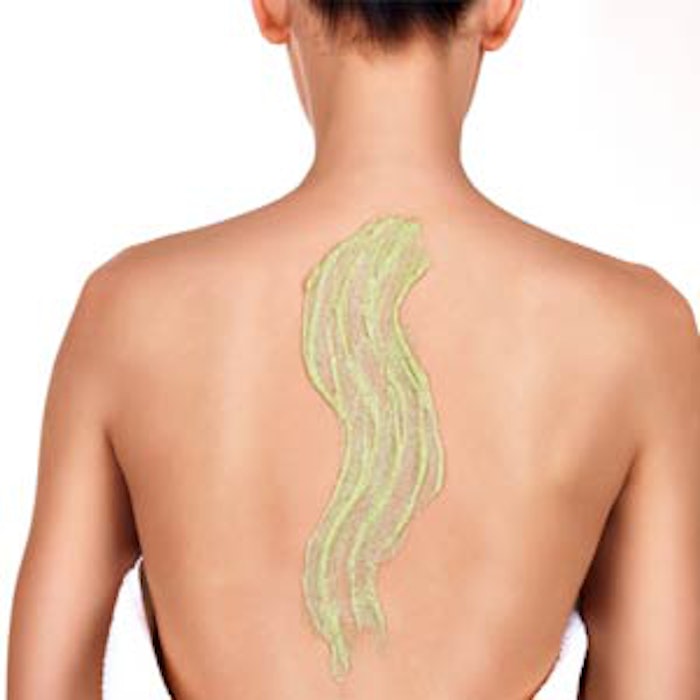
- Body care has been going through a transformation period, driven by innovation and further expansion into emerging markets.
- Companies have targeted convenience as a way to add value to body care offerings.
- Skin care brands have invested in developing more sophisticated and customized body care offerings for consumers, similar to those found in facial care.
- Product offerings are being developed for both women and men.
- Body care brand owners are also working on improving the experience of their products through lighter, faster-absorbing formulations, as well as looking to create a more pampering experience through exotic fragrance and luxurious texture.
While facial care continues to account for the lion’s share of skin care total value sales, body care has been going through a transformation period, driven by innovation and further expansion into emerging markets.
Previously: Bath & Body Hunts for New Consumers
Body care remains a low priority in spending for consumers globally compared to facial care, with consumers spending an average of $2.50 on body care in 2014, compared to more than $12 on facial care. However, body care’s great importance to beauty players stems not only from Western Europe holding a significant share of its premium sales (42% in 2014), but also from its strong growth in Middle East and Africa, as well as Latin America—at just under 10%—in 2014.
Further reading: The Feel Good Factors in Body Care
Convenience and Customization
While body care continues to show stable growth in Latin America and the Middle East and Africa, beauty players turned to innovation to rejuvenate the category in Western Europe and North America. A key complaint that consumers traditionally have about body care offerings is the amount of time it takes for application and absorption of the product. This has been a key focus for companies, which have targeted convenience as a way to add value to body care offerings.
Launches such as Nivea’s In-Shower Body Care and Vaseline’s Spray and Go were introduced to combat the perception of body care as a secondary part of the skin care routine, which can drop a product down or off consumers’ shopping lists.
Beiersdorf’s first-half results presentation emphasized that its new launches, including the In-Shower Body Care line, which has been expanded to six products, including In-Shower After Sun and Q10 Firming Body Lotion, have been recording double-digit growth. The company also stressed that the Nivea Express Hydration line reaffirms the brand’s commitment to creating convenient products for consumers.
Beyond convenience, skin care brands have also invested in developing more sophisticated and customized body care offerings for consumers, similar to those found in facial care. Customization has been made highly visible in order to add value to body care offerings, with brand owners segmenting their ranges to create more personalized solutions for groups of consumers.
Examples include Nivea’s latest Sensitive range and Dove’s Men and Care, which includes a body cream. Men’s grooming player Bulldog has also launched a body lotion for men, while premium brand owner Clarins introduced its ClarinsMen Body Moisturiser Spray.
Turning Body Care into an Experience
Body care brand owners are also working on improving the experience of their products through lighter, faster-absorbing formulations, as well as looking to create a more pampering experience through exotic fragrance and luxurious texture. Skin care players have gone as far as adding the word “pampering” into their new launches, as with Dove’s Pampering range and Nivea’s In-Shower Body Moisturiser Pampering Honey showcase.
These launches aim to glamorize the basic body care category and create a positive experience around the application of body care offerings using scent and texture. Jergens’ latest campaign for its Wet Skin Moisturizer brand has the tagline “You’re More Than Just A Pretty Face,” and aims to remind women to care for the skin on their bodies, as well as their faces.
The introduction of leggings, jeans and underwear with skin care properties—commonly known as cosmotextiles—is a further example of brands trying to create a better experience for consumers, especially for firming and anti-cellulite products.
Firming and anti-cellulite body care grew by 1.6% globally in 2014, despite continued declines in Western and Eastern Europe, as well as North America. The Middle East and Africa and Latin America lead growth in this category, as in general body care.
Nivea and Mixa have been introducing leggings and shorts with anti-cellulite properties to provide consumers with an alternative experience in using these products.
The introduction of moisturizing cream in jeans by Wrangler and in underwear by Triumph two years ago was also aimed at providing a more luxurious experience for consumers while wearing their products.
Future Challenges from Bath and Shower in Asia
Dove’s latest beauty makeover campaign showcases neither a skin care nor a color cosmetics product, but rather a body shower. This illustrates the potential power of body shower products with moisturizing properties and how they can create a luxurious experience for consumers that may persuade them to skip the body moisturizer. Dove’s Deep Moisture Body Wash with NutriumMoisture, Nivea’s Creme Care and Palmolive Body Shower Glamorous are just a few examples of this trend.
Finally, one of the key obstacles to body care’s growth prospects remains the low penetration in the dominant skin care region of Asia Pacific.
In Asia Pacific, where over half of total skin care value sales are generated each year, body care remains of low priority, as, culturally, consumers are more accustomed to spending on multi-step complex facial regimes than on any body care offering.
However, body care offerings that have added properties, such as whitening, have helped push the category forward, and Asia Pacific is expected to be the biggest contributor to body care’s absolute value growth over 2014–2019, adding half a billion dollars to its value. Continuing penetration into this region, especially to capture new consumers, will be pivotal to body care’s future global growth prospects.










